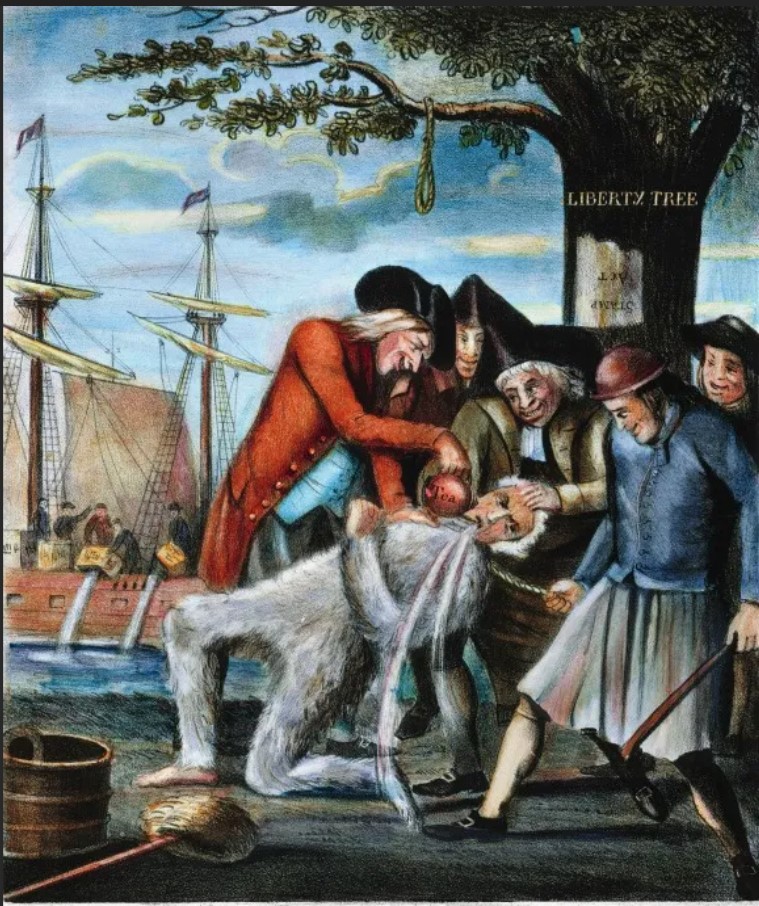The Anglican Church During and After American Revolution
Between a Rock and a Hard Place
Life for an Anglican during the American Revolution was a complex and often fraught experience, shaped by conflicting loyalties, personal convictions, and the tumultuous events unfolding around them. Anglicans, as subjects of the British crown, were sworn to the King. Yet, many identified with their American communities and harbored sympathies for the growing calls for independence. This conflicting allegiance created a deep internal struggle for many Anglicans. Some Anglicans, particularly clergy in positions of authority, remained staunch loyalists, actively supporting the British crown and facing ostracization or even persecution from their Patriot neighbors. Others embraced the Patriot cause, viewing it as a fight for liberty and aligning themselves with the burgeoning American identity.
A significant portion of Anglicans sought to remain neutral, avoiding active participation in the conflict while hoping to preserve their communities and religious institutions. However, neutrality often proved difficult as the war intensified and demanded clear allegiances. Anglican churches became caught in the crossfire, religious services were disrupted, and some clergy fled or faced imprisonment for their loyalist leanings. The conflict fractured Anglican communities along political lines, straining relationships and creating tensions within congregations. Clergy who remained loyal often faced resentment from Patriot parishioners, while those who supported the Revolution risked accusations of betraying their oath to the King.
The American Revolution marked a turning point for Anglicans in America. Facing persecution, internal divisions, and a decline in influence, they were forced to redefine their place in the newly formed nation. This period ultimately paved the way for the establishment of the independent Episcopal Church in the United States of America.
The Impact on Individuals
Anglicans, especially loyalists, often faced suspicion and hostility from their communities. They were accused of being unpatriotic or even spies, leading to social isolation and persecution. Some were tarred and feathered, an extremely painful act that marked its victims forever. Patriot mobs drove others from their homes, boycotted Anglican businesses, and confiscated their property. Each Anglican struggled with the ethical complexities of the conflict, whether to maintain their sworn oaths to King and Country (England) or avoid violence and persecution by accepting the popular call of rebellion.
Many colonists, especially the most committed Protestants, believed that the most important relationship in faith was between God and the individual and that no government should be given authority over that relationship. The Anglican clergy were largely loyalist when hostilities broke out in April of 1775 and many returned to England rather than break their oath of loyalty to the Head of the Church, King George III. The percentage of American Anglicans estimated to have abandoned the country during and after the Revolutionary War was 20%-40%, some returning to England while others fled to Canada and the West Indies. What percentage returned after the conflict is unknown.

Impact on the Anglican Church
The American Revolution was a devastating event for the American Anglican Church in America. According to the Library of Congress, more than one-half of Anglican priests had fled the country by 1777. The lack of an American bishop meant that replacements were not available. While laymen can perform certain liturgical acts in the Anglican Church – leading Morning and Evening Prayer, deliver sermons and reflections as part of worship services, and lead choirs, play musical instruments, and contribute their musical talents to enhance the worship experience – they cannot perform Holy Communion, pronounce Absolution, bestow the Holy Spirit and commission individuals for ordained ministry, or confirm baptized individuals into the full membership of the Church,
Prior to the Revolution, the Anglican Church was the legally established religion in five of the thirteen colonies and was supported by tax money. With the outbreak of hostilities, taxes were no longer collected, and church properties were forfeited. Lacking clergy and public funding, the Church of England in the U.S. was on life support. Estimates suggest half or more of Anglican churches shut down, particularly in the North where Loyalist sentiment was strong. Some sources mention Georgia, North Carolina, and New York facing particularly devastating closures. The combined effects of closures, financial hardship, and membership decline brought the Anglican Church in America close to collapse in the immediate aftermath of the war.
